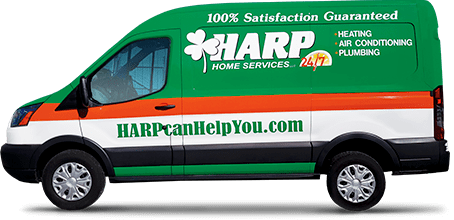
Do you think your home could benefit from a dehumidifier? A dehumidifier can help those with seasonal allergies or asthma as well as promote a healthier indoor environment. But not all dehumidifiers can service your needs. Think about the size, placement, and settings you want to help make your decision easier. Let’s explore everything you need to know about dehumidifiers.
What Is a Dehumidifier & What Does it Do?
As the name suggests, a dehumidifier reduces the amount of humidity or moisture in the air of your home. It’s an appliance you can place in an area of your home to improve the indoor environment.
How Does a Dehumidifier Work
Dehumidifiers use a fan to suck warm air into their refrigerated coils. As warm air makes its way over coils, it produces condensation inside the dehumidifier. The condensation will collect over time, falling into the storage tank. Then, colder, drier air comes out of the other side of the appliance.
What Size Dehumidifier Do I Need
The size of the dehumidifier you need depends on your needs, plus the size of the space. When looking at dehumidifiers, look at the capacity rating. This indicates the amount of moisture it can remove in 24 hours. For example, a 7-pint humidifier can remove 70 pints of moisture in a single day.
A 30-pint humidifier is best for:
- Damp areas of 500-1,500 square feet
- Significantly damp areas of 500-1,000 square feet
- Extremely wet areas of 500 square feet
A 50-pint humidifier is best for:
- Damp areas of 2,000-2,500 square feet
- Very damp areas of 1,500-2,000 square feet
- Wet areas of 1,000-1,500 square feet
- Extremely wet areas of 1,000 square feet
A 70-pint humidifier is best for:
- Very damp areas of 2,500 square feet
- Wet areas of 2,000-2,500 square feet
- Very wet areas of 1,500-2,500 square feet
Where To Place a Dehumidifier
Once you have a dehumidifier, you need to place it in a spot where it can be most effective. If your home has a basement, place it there or upstairs near the basement. That’s because the basement is the most humid area in your home. Other places you can put the dehumidifier include bathrooms and near windows and doors.
What Should I Set My Dehumidifier At
Now that you have your dehumidifier in place, it’s time to choose a setting. The best setting is typically between 30% – 50%. Some homeowners go with 45%, but it might take some trial and error to find a setting you’re most comfortable with. But keeping the setting in this range can help reduce dust mites, prevent mold from growing, and helps prevent dry air symptoms.
How Much Electricity Does a Dehumidifier Use
Worried about your electric bill soaring after installing a dehumidifier? Well, you don’t have to worry because this appliance doesn’t cost all that much to run. The Department of Energy (DOE) classifies dehumidifiers as a ‘low electricity expenditure.’ If you’re curious about how much electricity your dehumidifier may use, check its specification sheet or manual. Most dehumidifiers use anywhere from 300-700 W.
Have Questions About Your Home Appliances? Ask the Experts At HARP
HARP Home Services is your local HVAC contractor providing excellent indoor air quality services to communities in Connecticut. Whether you’re experiencing issues with heating, cooling, or plumbing, you can count on our team. No matter time or day, we can help you with emergency services. Call us at 1-860-544-2494 or contact us online.


